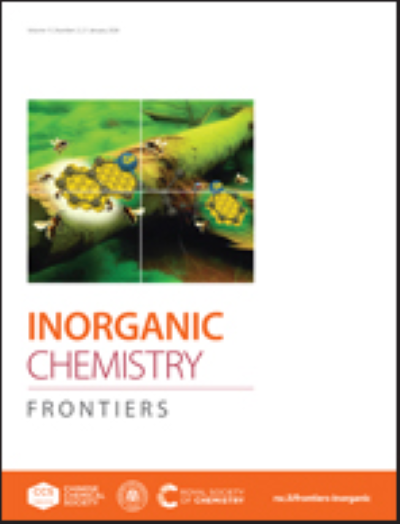Yolk@shell非均相Fenton反应纳米反应器:最新进展综述
IF 6.4
1区 化学
Q1 CHEMISTRY, INORGANIC & NUCLEAR
引用次数: 0
摘要
非均相Fenton反应是一种很有前途的非选择性降解有机污染物的技术,为解决环境问题提供了可行的方法。Fenton反应的核心问题是催化剂的高效设计,yolk@shell结构通常作为纳米反应器来提高H2O2(或过氧单硫酸根(PMS))的活化效率。典型的yolk@shell纳米反应器是由一个中空的外壳和一个可移动的核心构成的,它可以将在体溶液中进行的芬顿反应转移到内腔中。由于约束效应,增加了各种反应物之间的碰撞机会,加快了降解速度,提高了H2O2(或PMS)的利用效率,提高了催化剂的环境耐受性,降低了金属浸出率。因此,yolk@shell纳米反应器为非均相Fenton反应提供了理想的平台。此外,可以采用多种方法对yolk@shell纳米反应器进行定制,以获得更好的催化性能,这启发了研究人员设计具有优化成分和新颖结构的纳米反应器。目前,国内外对yolk@shell纳米反应器的制备和应用以及非均相Fenton反应的最新进展进行了综述,但对基于yolk@shell纳米反应器改进Fenton反应的策略尚未进行详细讨论。本文综述了用于非均相Fenton反应的yolk@shell纳米反应器的最新研究进展,从催化剂设计、催化性能、催化机理、催化剂优势、催化剂改进方法等方面进行了综述,以期获得性能更好的催化剂。本文章由计算机程序翻译,如有差异,请以英文原文为准。
Yolk@shell nanoreactor for heterogeneous Fenton reaction: A review of recent progress
Heterogeneous Fenton reaction was a promising technology to non-selectively degrade organic pollutants, providing a feasible solution to environment problems. The essential issue in Fenton reaction was the high efficient catalyst design, and the yolk@shell structure was usually functioned as the nanoreactor to boost activation efficiencies of H2O2 (or peroxymonosulfate (PMS)). In typical, a yolk@shell nanoreactor was constructed from a hollow shell and a movable core, which could transfer Fenton reaction performed in the bulk solution to the internal cavity. Benefiting from the confinement effect, the collision opportunity among various reactants was increased, the degradation rate was accelerated, the H2O2 (or PMS) utilization efficiency was boosted, the environmental tolerance of catalysts was improved, and the metal leaching was lowered. Therefore, yolk@shell nanoreactor provided an ideal platform for heterogeneous Fenton reaction. In addition, many methods could be adopted to tailor the yolk@shell nanoreactor for better catalytic performance, and this inspired researchers to design nanoreactor with optimized compositions and novel structures. At present, many reviews on either preparation and application of yolk@shell nanoreactor or recent development of heterogeneous Fenton reaction were reported, however, the strategies to improve the Fenton reaction based on yolk@shell nanoreactor have not been detailed discussed. This review have illustrated the recent progress on yolk@shell nanoreactor for heterogeneous Fenton reaction, and provided an comprehensive information on catalyst design, catalytic performance, catalytic mechanism, catalyst advantage, catalyst improvement method, aiming at catalyst with better performance.
求助全文
通过发布文献求助,成功后即可免费获取论文全文。
去求助
来源期刊

Inorganic Chemistry Frontiers
CHEMISTRY, INORGANIC & NUCLEAR-
CiteScore
10.40
自引率
7.10%
发文量
587
审稿时长
1.2 months
期刊介绍:
The international, high quality journal for interdisciplinary research between inorganic chemistry and related subjects
 求助内容:
求助内容: 应助结果提醒方式:
应助结果提醒方式:


